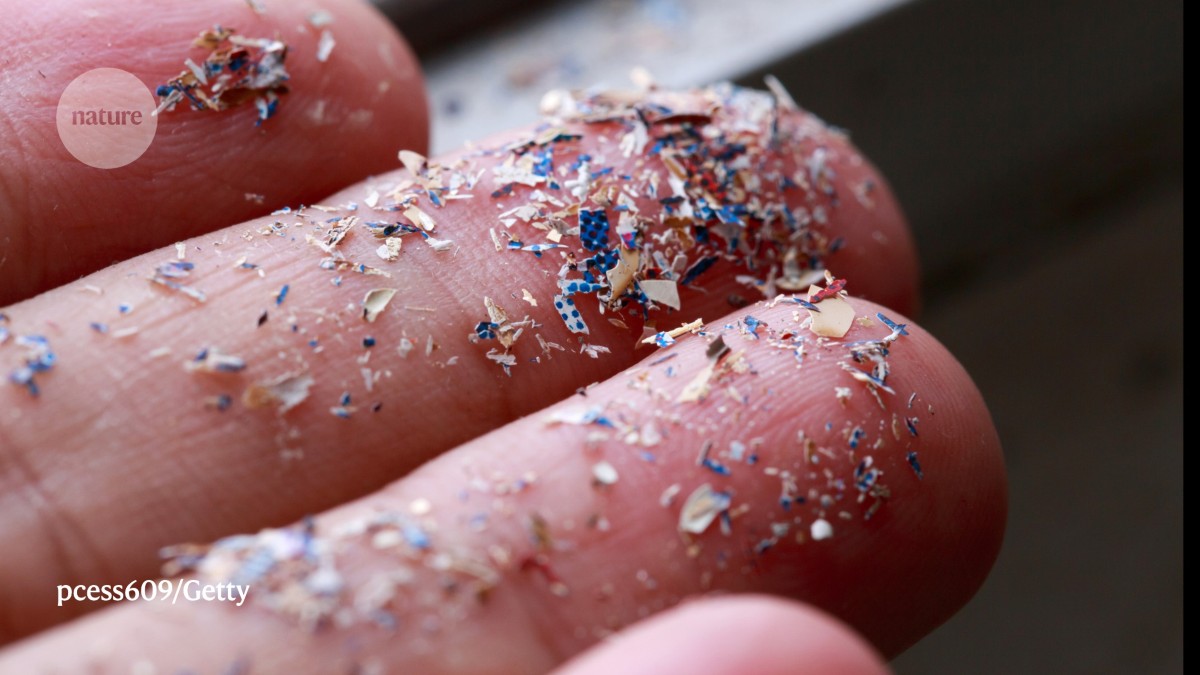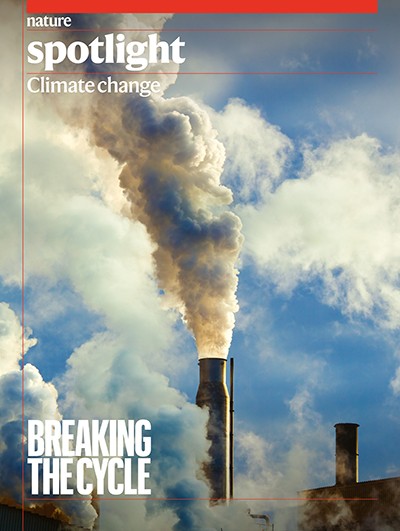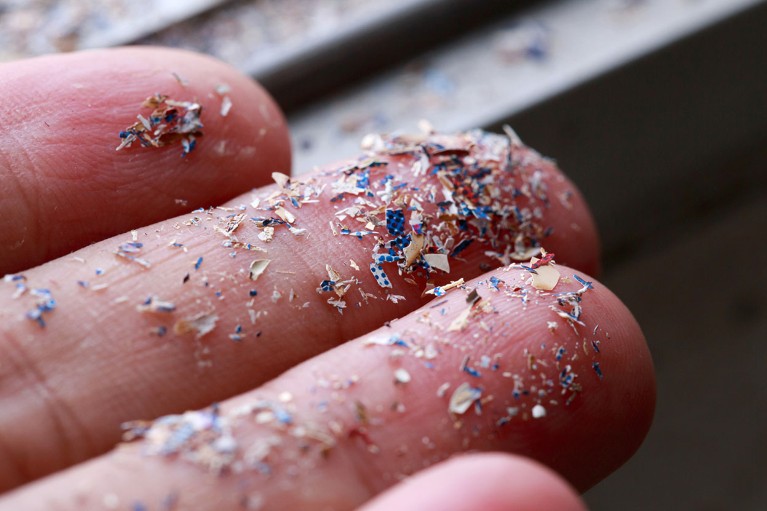
Microplastics can degrade in the environment to form plastic dust.Credit: pcess609/Getty
Researcher Karin Kvale first became interested in plastic pollution when she was living in Kiel, Germany, where her young children spent part of their school days on Falckenstein beach. “Every day they would come back with their pockets full of plastic fragments,” she says.
That was about five years ago, and, as an Earth-systems modeller, Kvale was intrigued by the idea that shards of degrading plastic might have become prevalent enough in nature to begin altering Earth systems. At the time, this concept was understudied, particularly in the oceans, on which Kvale focused her efforts.
Nature Spotlight: Climate change
In 2021, Kvale relocated to New Zealand and launched a consultancy called Aotearoa Blue Ocean Research, in Lower Hutt. She is now part of a community of scientists who study the plastic cycle — how plastic enters Earth systems, moves through the environment and affects its surroundings.
As fossil-fuel derivatives, plastics are made of refined carbon. By 2015, about 6.3 billion tonnes of plastic waste had been generated, with around 79% of this accumulating in landfills or the natural environment, where it breaks into ever smaller pieces1. Each year, plastic production increases exponentially: the total weight of carbon in plastic has surpassed the mass of all animals combined, and is likely to equal the mass of all bacteria by 2095 (see ‘Litter legacy’)2.
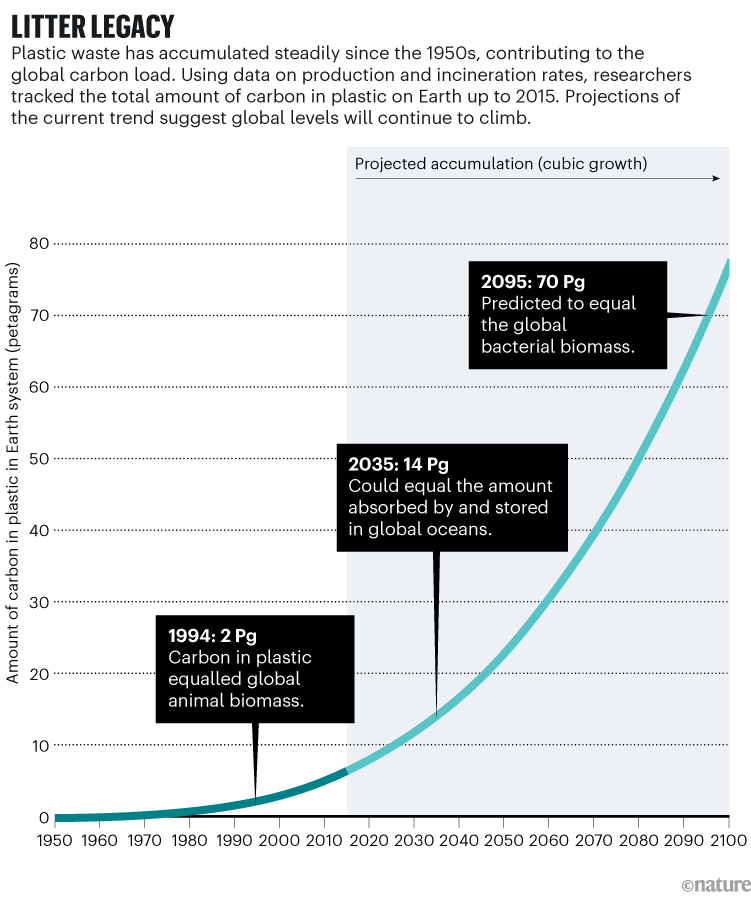
Source: Adapted from Fig. 3 of ref. 2
By some estimates, plastic production contributes at least 4% of global greenhouse-gas emissions. However, once plastic enters the environment, it’s less well known how it affects Earth’s carbon cycle — the process that moves carbon between living organisms and the soil, oceans and atmosphere. As plastic degrades, it seeps into these environments, where studies suggest it interferes with crucial systems that regulate atmospheric carbon dioxide and stabilize global temperatures3–5. After environmental exposure, plastic can break down into dust, which extends its reach, according to environmental biogeochemist Janice Brahney at Utah State University in Logan. “Once in the atmosphere, it can get anywhere,” she says.
In circulation
Each year, the world’s oceans pull around 10 billion tonnes of carbon from the atmosphere down towards the sea floor, through a process called the biological carbon pump6. The pump is facilitated, in part, by phytoplankton — tiny photosynthetic organisms that build their bodies out of atmospheric CO2 dissolved in the sea’s surface. When phytoplankton die, their bodies drift to the bottom of the ocean as a blizzard of organic particles that researchers call marine snow. Once this carbon is buried in sediment on the sea floor, it is stored away and no longer contributes to atmospheric warming.
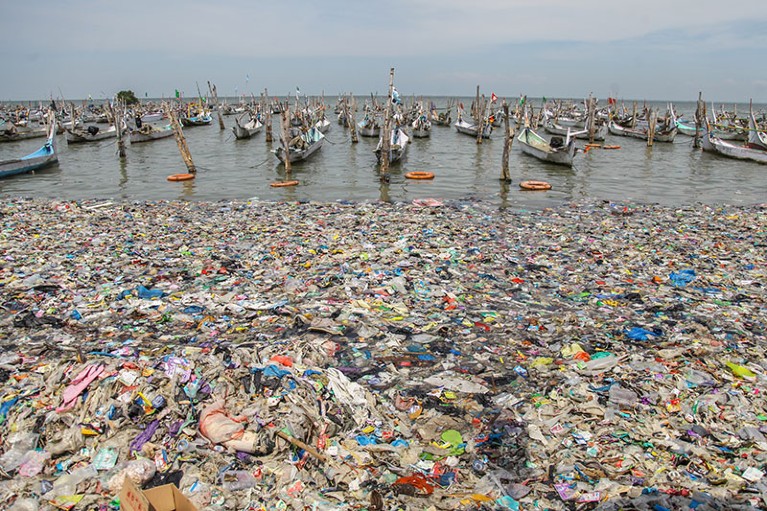
Moored fishing boats in Madura island, Indonesia, near a beach full of plastic waste.Credit: Suryanto Putramudji/NurPhoto via Getty
The past five years have seen a flurry of papers investigating how ocean plastic might slow down this biological carbon pump. Phytoplankton have been shown to stick to buoyant waste plastic, which reduces the speed at which marine snow sinks7. At the same time, the carbon found in plastic provides a food source for marine bacteria. As these bacteria feed on plastic and proliferate, they use up key nutrients from the ocean that are then unavailable to phytoplankton. This could reduce phytoplankton populations and limit the fall of marine snow. However, the question remains: can plastic weaken the biological carbon pump enough to reduce the amount of carbon that is stored and make a difference to global warming?
Kvale thinks the answer is ‘no’. The biological carbon pump is not a one-way street, she explains. Rather, ocean circulation brings some of the carbon back up to surface waters, where it can re-enter the atmosphere. As the climate warms, this ocean circulation is expected to weaken, meaning that less carbon will be carried back to the surface. But by Kvale’s calculations8, weakening circulation actually makes the carbon pump much more effective, outweighing any decrease in effectiveness caused by plastic. Over the next 100 years, “plastic pollution is really going to have a minor or negligible influence on how carbon is stored in the ocean”, she says.
But that assessment depends on how much the circulation changes. According to biogeochemist Aron Stubbins at Northeastern University in Boston, Massachusetts, “ocean circulation is really hard to predict”. Storms are expected to increase with climate change, so this could also compensate for weakening circulation, he points out — because stormy surface waters can force biological material downwards.
Stubbins says that, by his estimates, plastic could slow down the biological carbon pump by up to 25% by the end of the century, in the absence of other large changes. This, he says, “is why we got concerned and wrote a proposal to say we should figure out if this is real”. He is now gearing up to test how ocean plastic affects dissolved carbon and the biological carbon pump, having received a grant in April to apply climate models to real-world observations of plastic concentrations in the ocean. “It’s one of those proposals you get funded and you hope you’re wrong,” he says.
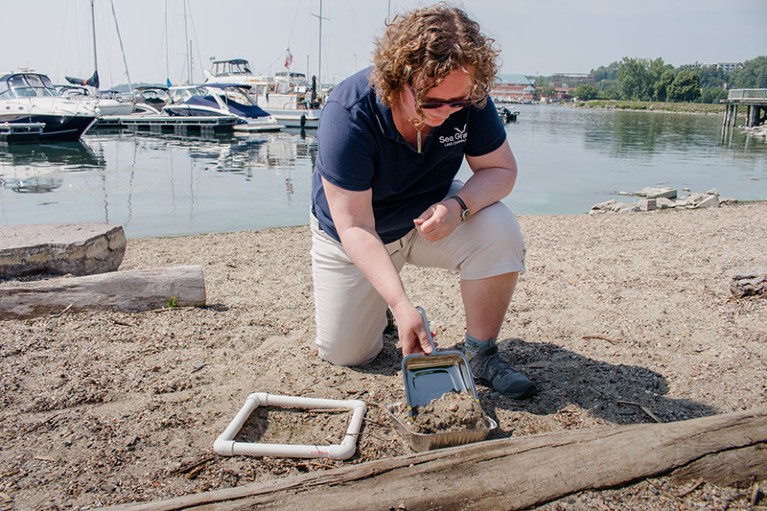
Hydrologist and geomorphologist Anne Jefferson collects beach sand that she will analyse for microplastics.Credit: Maddie Cross
There’s good evidence that plastic slows down the sinking of marine snow, says environmental scientist Xia (Alice) Zhu at the Memorial University of Newfoundland in St John’s, Canada, who has co-authored a systematic review on how the plastic cycle affects climate change9. But sorting out how slower marine snow will affect carbon storage in different oceans, and whether circulation patterns will play a part, requires more work. “We need more research into this before we write [plastic] off as insignificant,” she says.
Global spread
Although the impact of plastic on the oceans is still up for debate, plastic is having tangible effects on land, where it forms dust on the ground and in the air. Collectively, about 1,000 tonnes of plastic fall each year from the atmosphere onto lands in the western United States that are protected and relatively uninhabited, such as the Grand Canyon. That is equivalent to between 120 million and 300 million plastic water bottles, Brahney and her colleagues estimate10.
Studies suggest that all this plastic dust alters the path of sunlight on its way to and from Earth’s surface, changing the amount of energy that’s available to heat the planet2,9. But whether the net effect will be that atmospheric plastic warms or cools Earth is still under investigation. In some of the most comprehensive work on the subject so far, scientists incorporated the effects of plastic dust into a climate model and found that warming or cooling depends on how high into the atmosphere the plastic has spread4. Although that study was based on non-pigmented plastics, most real-world plastic comes in many different colours, some of which reflect sunlight and some of which absorb it, Brahney says. This makes the net effect tough to sort out, but she and her collaborators are working on it.
Airborne plastic also carries other risks. It has been found in natural environments such as forests, where it is trapped by the broad surfaces of leaves. When leaves fall to the ground in the autumn, they might be delivering plastic to the soil ecosystem, turning forest floors into plastic hot spots, suggests soil chemist Collin Weber at the Technical University of Darmstadt in Germany.
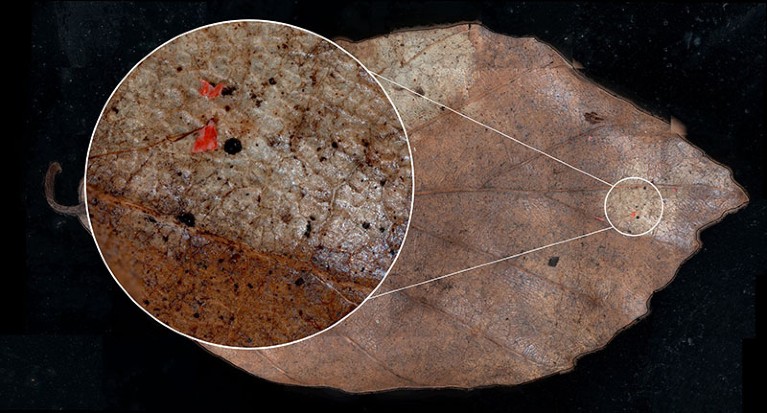
View of a beech-tree leaf under a high-resolution microscope, showing red microplastic particles (inset) on the surface.Credit: Collin Weber


